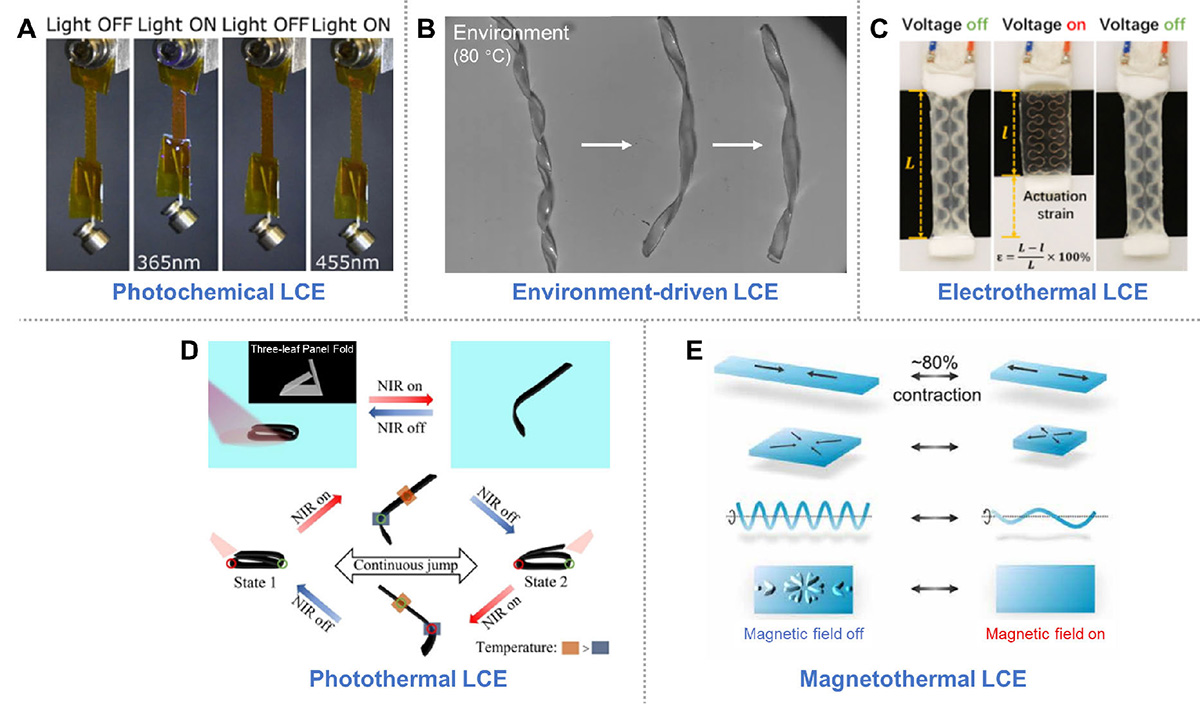Figure 4

Download original image
Actuation performance of LCEs with different actuation types. (A) Photochemical mechanism. Under UV irradiation, azobenzene molecules can transition from trans to cis isomerization, leading to the contraction of the LCE strip. After exposure to blue light (455 nm), the LCE strip returns to its original shape. Reprinted with permission from Ref [67]. (B) Environmental heat mechanism. A helical-shaped LCE self-rolling robot powered by environmental heat achieves autonomous locomotion. Reprinted with permission from Ref [72]. (C) Electro-thermal mechanism. Joule heat is generated when a voltage is applied to the metallic wire, increasing the temperature and causing LCE to contract in the longitudinal direction. After turning off the voltage, the LCE gradually recovers to its original shape. Reprinted with permission from Ref [85]. (D) Photo-thermal mechanism. When the CNT-LCE ribbon is exposed to NIR light, CNT can convert the light to heat, causing the temperature to increase and further inducing the deformation. Reprinted with permission from Ref [95]. (E) Magneto-thermal mechanism. The Fe3O4 nanoparticle doped-LCE actuators can exhibit different motion modes under the alternating magnetic fields. Reprinted with permission from Ref [102].
Current usage metrics show cumulative count of Article Views (full-text article views including HTML views, PDF and ePub downloads, according to the available data) and Abstracts Views on Vision4Press platform.
Data correspond to usage on the plateform after 2015. The current usage metrics is available 48-96 hours after online publication and is updated daily on week days.
Initial download of the metrics may take a while.

